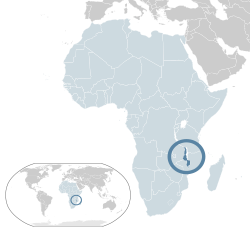For my kids, blog night is only worth doing if there's some dessert involved. Of course they feel that way about every meal, which is why most of them hardly ever eat anything (I'm a Dessert on Special Occasions Only kind of gal). Blog night is sometimes a special occasion, and since I was pretty sure that they weren't going to like either of the main dishes I decided to throw them a bone with these little pineapple cookies.
I'll just say up front: theses things are yummy. Now, you could go to all the trouble of making the pineapple filling but I'll be quite honest with you, you could easily make these with some store-bought pineapple jam and I'm pretty sure they would come close to being just as delicious. Making the filling is really the most time consuming part of the process.
Here's how:
First you have to trim the pineapple. Now, you could probably use canned pineapple too, but you didn't hear that from me. If you're using a fresh pineapple, make sure you've removed all those little brown specs and hairs, because you don't want those in your cookies.
Now chop up the pineapple and put it in a food processor. Process until it's a smooth puree.
Put the pineapple puree into a non-stick pan and cook over medium heat. You can add some whole cloves at this point too, but I didn't, because I hate cloves. This is really just like making jam: you need to keep stirring it to stop it from burning. You want most of the moisture to cook off--when the puree is almost dry, add sugar and lemon juice and stir to combine.
Reduce heat to simmer and keep stirring until the pineapple filling turns a lovely golden color. It should be really sticky.
Transfer to a bowl, remove the cloves (if using) and chill for a half hour.
Cream the butter and milk together until fluffy. Add the egg yolks and beat gently until combined, but don't go overboard or the eggs will curdle.
Add flour and stir gently until you have a soft dough.
Mix the remaining egg yolk with the 1/8 tsp condensed milk and 1/4 tsp oil. Set aside.
So now you're going to divide the dough and the filling up into 50 portions. That's right, these things are pretty small. First roll the dough pieces up into balls.
Take one of the balls and flatten it with the palm of your hand. Add one portion of the pineapple filling to the center.
Now fold up the edges to form a little packet. Then gently roll the packet into a ball. Repeat until you're out of balls and filling
Line a baking sheet with parchment paper and put all the balls on the sheet. Cut a little criss-cross pattern into each cookie with the back of a knife, and then brush with the egg wash.
Bake at 330 degrees for 20 to 33 minutes or until golden brown. Let cool before serving. Post guards to protect from your children.
I probably don't have to tell you how much my kids liked these (Martin and I did, too). Really, as far as they were concerned, it made having to smell the shrimp paste all worthwhile. In fact I made this meal more than a month ago, and they still dream about pineapple cookies. My oldest daughter was watching me put this post together and when she saw the photo, she said, "Can you make those tonight?" Haha. As if I'll ever have time to make these from scratch again! Maybe on her birthday?
Here's the printable version of the recipe:
Pineapple Cookies
from Rasa Malaysia

Ingredients
- 1 1/2 sticks unsalted butter, softened
- 3 1/2 tbsp sweetened condensed milk
- 1 egg yolk
- 2 cups all-purpose flour or plain flour
- 1 whole pineapple, trimmed
- 1/4 tbsp whole cloves (optional)
- 1/2 cup sugar
- 1 egg yolk
- 1/8 tsp condensed milk
- 1/4 tsp oil
Instructions
- First make sure you've removed all those little brown specs and hairs from the pineapple, because you don't want those in your cookies. Now chop up the pineapple and put it in a food processor. Process until it's a smooth puree.
- Put the pineapple puree and cloves (if using) into a non-stick pan and cook over medium heat. Keep stirring or it will burn. You want most of the moisture to cook off--when the puree is almost dry, add the sugar and lemon juice and stir to combine.
- Reduce heat to simmer and keep stirring until the pineapple filling turns a lovely golden color. It should be really sticky.
- Transfer to a bowl, remove the cloves and chill for a half hour.
- Cream the butter and milk together until fluffy. Add the egg yolks and beat gently until combined, but don't go overboard or the eggs will curdle.
- Add the flour and stir gently until you have a soft dough.
- Mix the remaining egg yolk with the 1/8 tsp condensed milk and 1/4 tsp oil. Set aside.
- So now you're going to divide the dough and the filling up into 50 portions. That's right, these things are pretty small. Roll the dough pieces up into balls, then flatten. Add one portion of the pineapple filling to the center and fold up the edges to form a little packet. Then gently roll the packet into a ball.
- Line a baking sheet with parchment paper and put all the balls on the sheet. Cut a little criss-cross pattern into each cookie with the back of a knife, and then brush with the egg wash.
- Bake at 330 degrees for 20 to 33 minutes or until golden brown. Let cool before serving.








.svg/550px-Malaysia_(orthographic_projection).svg.png)





















